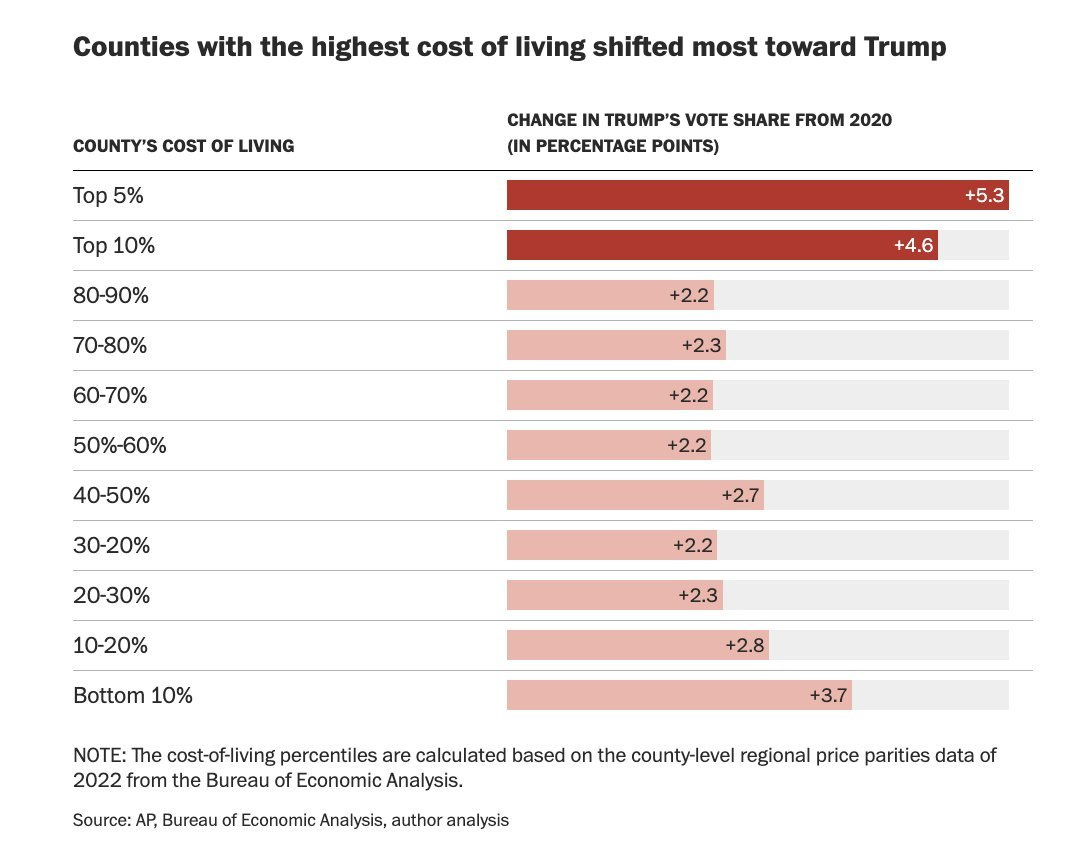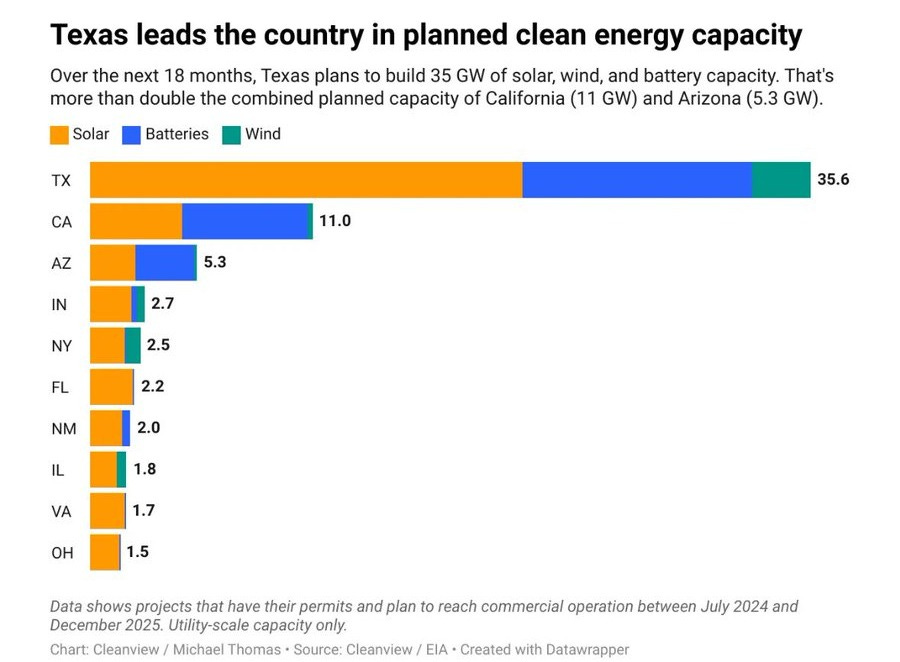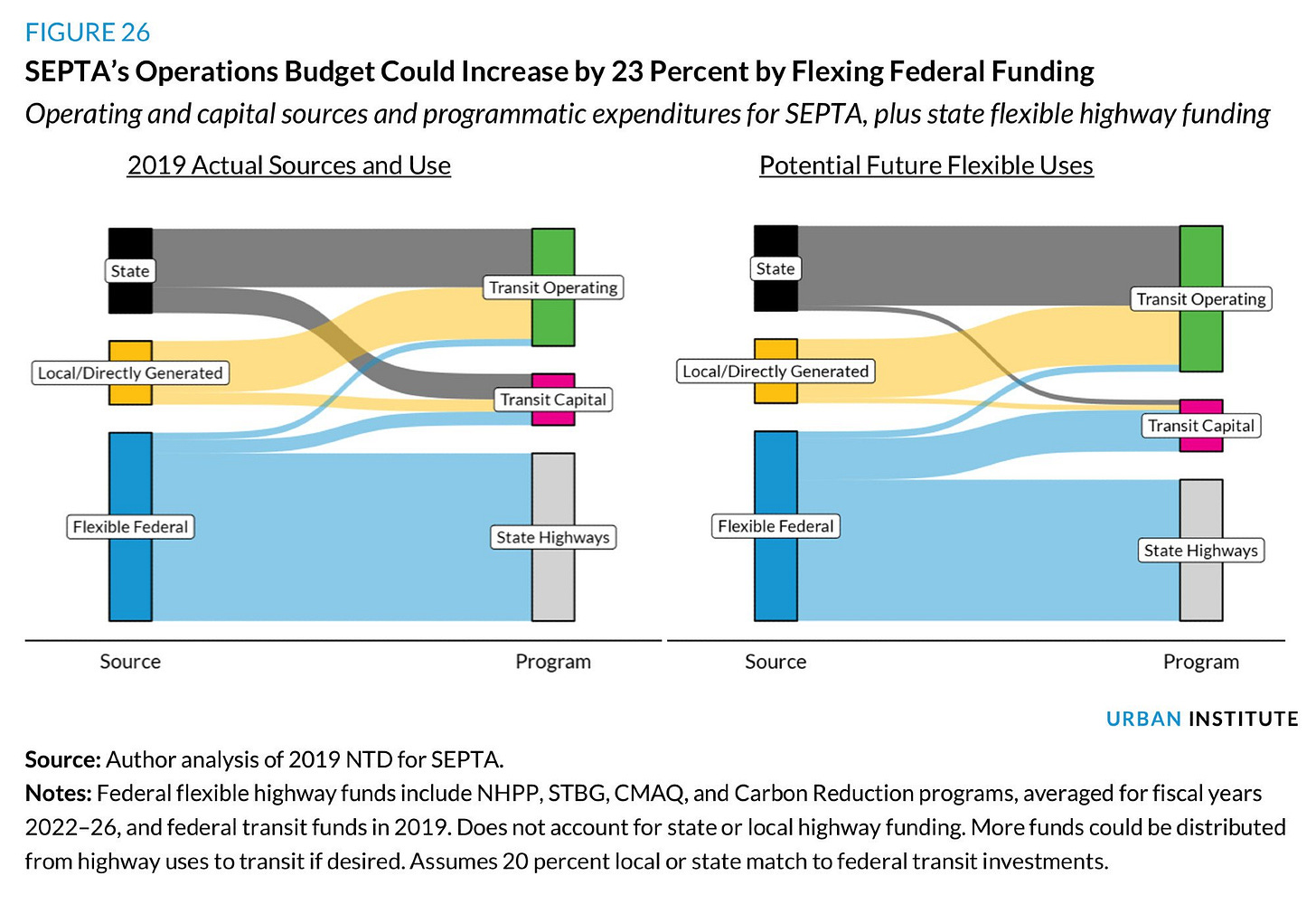Trump's victory shocked many, and while there is plenty of discourse on why he won and what Democrats could have done differently, it's crucial to face the reality of the next four years. Democrats cannot keep up business as usual, especially when some of the biggest swings to Trump happened in deep blue states like New York and New Jersey, both of which swung right by double digits. With Republicans in control federally, states with Democratic trifectas (e.g., NY, CA, NJ, MA, IL, WA) need to focus on what they can control at the state and local levels. This article outlines key urban issues for Democrats to address, with examples of successful strategies to replicate.
Step 1: It’s time to build—and bring down costs.
Blue states are expensive, in large part due to their success—dynamic cities, great schools, and high quality of life all attract lots of people. Yet instead of building more housing to meet demand, restrictive zoning policies have limited supply, driving up housing costs. These costs ripple through the economy, increasing prices for everything from childcare to dining and significantly contributing to inflation that weakened Biden’s popularity. It's time to tackle this challenge head-on.
But there’s a major opportunity here: since housing policy is largely set at the local level, it’s time for blue states and cities to step up and aggressively pursue policies to make housing more affordable. It’s no coincidence that one of the few states that didn’t shift significantly towards Trump this year, Colorado, has been one of the most pro-housing states in the country. Additionally, polling continues to suggest that the silent majority supports building housing (New York’s “City of Yes” upzoning polls at 72% support). For too long, local Democratic groups and politicians have been captured by the loud anti-housing minority, specifically the disproportionately wealthy, older, landowners who show up to “community meetings”. That needs to change, and fast. No more nonsense. It’s time to go full YIMBY and build, baby, build.
Success Story: Recently, a progressive majority on the Austin City council has passed a broad suite of pro-housing reforms that are already starting to bear fruit, with rents rapidly falling as more housing comes on-line.
But this goes beyond just housing. Many blue states have environmental review laws such as California’s CEQA and New York’s SEQRA that layer on top of federal requirements, and have hindered the construction of everything from housing to clean energy to transit. As a result, Texas is building wind and solar at a much faster pace than California. Spending money on issues like climate and housing is only half of the equation. The other half of the equation is simply making it easier to build. While this pro-energy development mentality is a relic of Texas’ oil production roots, wind and solar have become cost-competitive with fossil fuels, and the natural result is a ton of clean energy infrastructure being built. This isn’t an argument for blue states to get rid of all environmental regulations. However, we need to do a rational review of these laws and fix the ones that end up doing more harm than good.
Success Story: Minnesota Governor Tim Walz recently signed a bill that streamlines permitting for renewable energy and transmission projects, saving up to a year in development timelines as part of the state’s net-zero goals.
Step 2: It’s time to get creative on funding.
Under the Trump administration, blue states and cities will face reduced federal funding for vital investments like transit, housing, and clean energy. While federal Democrats aim to retake control of Congress in 2026, state and local officials must get creative and pursue innovative policies in the meantime.
For starters, the dream of billions in federal funding to renovate public housing is dead, at least for the next four years. But there are alternative revenue models that should be looked at to accomplish the same goal of building subsidized housing by partnering with local developers to construct denser mixed-income housing.
Success Story: One of the most exciting examples is in my very own backyard in Manhattan, where NYCHA is partnering with developers to tear down crumbling, asbestos-filled public housing and replace it with brand new mixed-income housing. While many are understandably concerned about the risk of displacement, this plan has been crafted in a way that increases the number of subsidized homes, provides brand-new, upgraded homes to everyone currently living in existing public housing, and increases the overall supply of housing in the neighborhood. It’s a true win-win-win, and best of all, a private developer is footing the bill, rather than the city.
Another place where state and local Democrats need to get creative is transit funding. I worked in the Senate in 2021 where I reviewed the entire Bipartisan Infrastructure Bill, and there are a ton of provisions enabling “flexing” of federal transportation funds from highway expansions to mass transit, largely at the discretion of state DOTs who report to the governor. The problem is that most states do not take advantage of these provisions, and the ones who do could be doing much more.
Success Story: In Pennsylvania, Republicans who control the State Senate refused to fund SEPTA (Philadelphia’s mass transit system), which would have resulted in severe service cuts and fare increases. However, thanks to the pressure from transit advocates and local officials, Governor Shapiro recently flexed $153 million to SEPTA, saving the system from these severe cuts. Unfortunately, in New York, Governor Hochul refused to do the same.
Failure Story: In New Jersey, Governor Phil Murphy is spending over $10 billion on a pointless highway widening (that approaches the Holland Tunnel which serves as a bottleneck). Additionally, he is spending taxpayer revenue on expensive lawyers to try and overturn congestion pricing, rejecting a proposed settlement with NY that would have provided large amounts of funding for NJ Transit. This is all while NJ Transit faces wide criticism for repeated service disruptions. Thankfully, this is the last year of Murphy’s term.
Additionally, Democrats need to get smart on parking. Most cities are sitting on a gold mine of free parking spaces that could be generating revenue which would be reinvested into transportation improvements. In New York City alone, there are approximately 3 million parking spots, 97% of which are free. There is no reason that we should be giving away valuable public land for the private storage of cars, and free parking results in cars wasting their time cruising for parking (creating worse pollution and traffic), or even drivers ignoring street sweeping requirements and accepting tickets every week. With some quick back of the envelope math - assuming each parking spot would net $10/day in revenue (a likely underestimate given the fact that garage parking often exceeds $50/day), NYC could tap into more than $10 billion in annual revenue that could be devoted towards improving transit.
Success Story: Bogota, Columbia instituted new street-parking fees in 2021 that will be reinvested in improving public transit. The World Bank noted that we may be sitting on a “gold mine” of transit funding via parking and congestion fees.
To tie this section all together - one last win-win-win to focus on is transit-oriented development (TOD). We should be using the YIMBY toolkit to make it as easy as possible to build as much housing as possible near transit, as this will boost property tax revenues, reduce traffic, and boost transit ridership (and according fare revenue).
Step 3: It’s time to make cities even safer.

Cities are among the safest places in America, largely because traffic deaths—the leading cause of external fatalities—are lower where driving is less frequent. I wrote a detailed analysis of the issue here, but the gist of it is that poorly designed streets, oversized cars, lax enforcement, and excessive driving give the U.S. the highest traffic death rate globally. New York stands out as one of the safest places, thanks to limited reliance on driving, but there’s room for improvement.
Dangerous driving remains rampant nationwide, including in New York. While while recent legislation to expand red light cameras across the state is a good step forward, it’s not enough. Stricter measures, like license suspension and car impoundment for repeat offenders, are overdue. For example, a driver with 80 violations in two years recently killed a cyclist in Astoria—proof that habitual offenders are a deadly threat. Similarly, "ghost plates" used to avoid tolls and tickets are a major issue and while a recent crackdown is a good start, we need to adopt a zero tolerance approach to this behavior that, at best, steals from the government, and at worst, enables deadly driving.
Success Story: After COVID, Philadelphia put up traffic cameras on Roosevelt Boulevard, one of the most dangerous streets in the city. A recent study found that the cameras have saved dozens of lives since being installed.
Road safety is just one part of public safety. While New York is safer than much of the country, there’s room for improvement. Stories of random acts of violence by repeat offenders, often with untreated severe mental health issues, highlight the need for action. In California, voters passed stricter penalties for repeat offenders, and progressive DAs were replaced by tough-on-crime prosecutors in deep-blue areas like Los Angeles and Oakland. Democrats must regain voter trust by funding mental health programs and conservatorships to compel treatment for individuals in severe crises, preventing harm to themselves or others.
Public safety concerns also affect public transit, where perceptions of disorder deter some riders, ironically leading to riskier car travel. Addressing this perception requires making transit a safe, reliable sanctuary through systemic measures and effective enforcement to swiftly manage any dangerous behavior.
Success Story: The Washington D.C. metro invested in new and improved faregates that have reduced fare evasion by 82%, additionally, crime rates on the train have significantly dropped.
Step 4: It’s time to embrace state capacity and good governance.
Democrats must prioritize state capacity and focus on building infrastructure that directly improves people’s lives. As a whole, America often struggles with delivering infrastructure projects efficiently, which was the topic of one of my earlier newsletters here. Democrats need to fix this and become a beacon of well-managed projects that are built on-time and on-budget, with costs in-line with international benchmarks. The status quo harms Democrats politically, as voters often fail to see the benefits of big infrastructure investments, purely because they take too long to build. This is in contrast with Madrid, which successfully built major metro expansions in under four years, allowing politicians to take credit for the infrastructure, fueling additional electoral success. This is how democracy should work: politicians make promises to improve peoples’ lives, and voters accordingly reward or punish politicians based on whether or not those promises are fulfilled.
Success Story: New York’s MTA acknowledged their plans to expand the Second Avenue Subway had some of the highest costs in the world, and accordingly made smart design and management changes that reduced those costs by over $1 billion.
Failure Story: An extension of BART to San Jose prioritized reducing short-term road disruption over efficient project delivery, choosing an extremely expensive, inconvenient tunnel deep underground. This has resulted in significant cost overruns and delays, and many expect the Trump administration to further defund the project. By trying to make everyone happy, this project became unfeasible and may never be built.
Additionally, Democrats need to stop over-relying on outsourcing state functions to non-profits, which often leads to inefficiencies and limited accountability. For example, California’s homelessness crisis is exacerbated by fragmented services managed by non-profits, each with different priorities and little coordination. Furthermore, many of these non-profits, such as AHF, essentially function as slumlords, providing dismal living conditions as their executives pull in large salaries and spend excessively on political donations. Instead, Democrats should focus on strengthening public agencies to directly provide services, with a focus on transparency, consistency, and results. By reinvesting in state capacity, Democrats can prove government’s ability to solve the problems that matter most to voters.
Step 5: It’s time to act and save us from a 2030 redistricting disaster.
For those who follow elections closely, the “Blue Wall” should be a familiar concept. Basically, if a Democrat wins all of the consistently Democratic states, the Blue Wall of Wisconsin, Michigan, and Pennsylvania are sufficient for an electoral college victory, and in the past three elections, one of these states has been the “tipping point” state that ultimately decided the election.
The problem is that blue states are not building enough housing, so the size of the “Blue Wall” has been shrinking over the past 20 years. In the 2008 election, the Blue Wall would provide the Democrat 279 electoral votes. In 2012, 2016, and 2020 that number shrunk to 273, and in 2024, the number fell to 270, the bare minimum needed to win the election.
However, based on census estimates of population trends during the 2020s, blue states are not seeing enough population growth to maintain the blue wall. If this trend holds, in 2032, the Blue Wall will only provide 257 electoral votes. That means that even if a Democrat wins the Blue Wall (and Nevada or Arizona!) it won’t be enough to win the presidency. And on top of that, blue states will have fewer congressional districts, making it harder to win the House as well.
This is a direct consequence of the blue state NIMBY policies that hinder housing construction, particularly in New York and California. High home prices and rents is proof that the demand to live in NY and CA is quite high, but the lack of supply is what prices people out, reducing the population and weakening the federal representation that these states have. While the 2030 census isn’t for five years, blue states need to get their act together ASAP to pass laws that make it easier to build housing. Financing, construction, and leasing of apartments is a multi-year process, so we need to pass laws this year to ensure that new housing can be built and occupied by the 2030 census. There is no time to waste.







Absolutely on all points! I wish more progressive folks realized we are facing a Blue Wall cliff if we don’t address housing ASAP.
Couldn't have said it better myself!